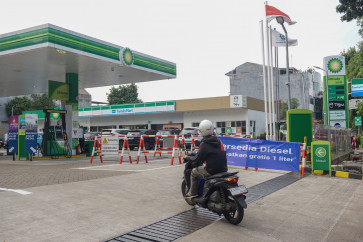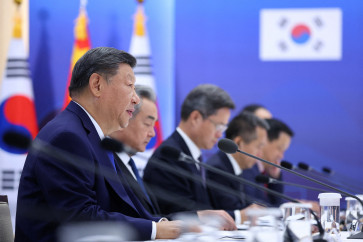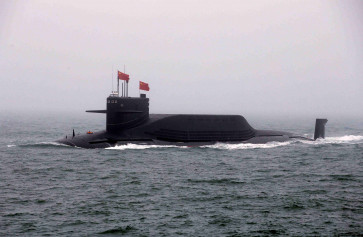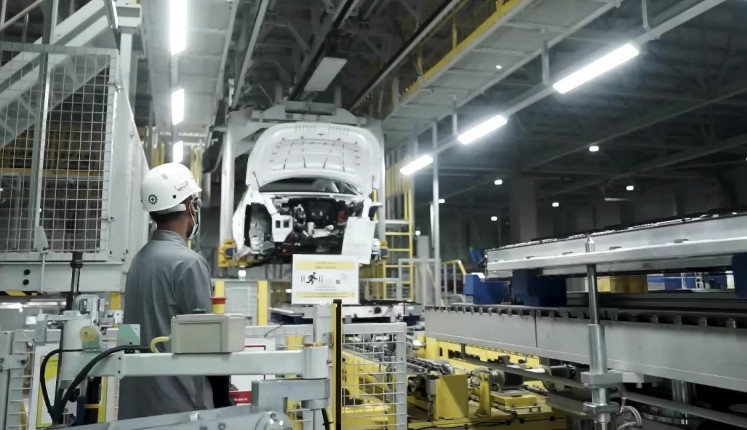Popular Reads
Top Results
Can't find what you're looking for?
View all search resultsPopular Reads
Top Results
Can't find what you're looking for?
View all search resultsObstacles remain high for RI to develop manufacturing
Value-added products such as processed coffee beans, chocolate, cars and spare parts are enjoying higher demand worldwide compared to raw commodities, but Indonesia is being left behind neighboring countries due to its underdeveloped manufacturing industry
Change text size
Gift Premium Articles
to Anyone
Value-added products such as processed coffee beans, chocolate, cars and spare parts are enjoying higher demand worldwide compared to raw commodities, but Indonesia is being left behind neighboring countries due to its underdeveloped manufacturing industry.
The US-Indonesia Investment Report 2016 published by the US Chamber of Commerce and American Chamber of Commerce (AmCham) Indonesia emphasizes the importance of developing a viable manufacturing industry in Indonesia to balance against plunging commodity prices.
“With the decline in commodity prices, manufacturing is once again relatively attractive for investment,” the report reads.
However, several issues hold back the country’s manufacturing, from low labor productivity and high logistics cost due to a lack of quality infrastructure and cumbersome business regulations and tax payments.
Several business associations interviewed by the The Jakarta Post acknowledged the truths highlighted within the report.
Indonesia’s labor intensive garment industry has low labor productivity compared to other countries.
Textile Industry Association (API) chairman Ade Sudrajat said workers were only allowed to work 40 hours a week as stipulated by the Indonesian Labor Law. In some neighboring countries, workers can work at least 48 hours in a week.
The law also allows workers to form labor unions with just 10 members and obliges employers to provide overlapping incentives once a labor contract has ended. This motivates unions to end contracts early in order to get more benefits, claimed Ade.
Meanwhile, in terms of logistics, costs have remained stubbornly high at 24 percent of total gross domestic product (GDP). Thailand, by contrast, records logistics costs at 16 percent of its GDP.
High logistics costs — stemming from a lack of infrastructure and inefficient supply chains — have posed problems for various manufacturers, with some even forced to close down operations in the face of soaring costs.
Indonesian Association of Rubber Producers (Gapkindo) advisor Daud Husni Bastari cited the collapse of a number of rubber-glove firms in North Sumatra due to high industrial gas costs, leaving investors with no choice but move to Malaysia.
Indonesian Employers Association (Apindo) fisheries division chairman Thomas Darmawan also pointed to the fact that the marine processing industry was spread primarily throughout Java and in a handful of big cities outside of Java due to limited logistics facilities in other parts of the country.
“There are many fishing areas outside Java, but the fisheries industry is not well-developed due to a lack of infrastructure, from damaged roads to electricity shortages,” he said.
Thomas lamented the absence of various marine manufacturing facilities, as these could potentially produce numerous value-added goods, from fish flour to skin nutrition, rather than just meat.
Tax is also a significant problem. Gapkindo’s Husni said a 10 percent value-added tax (PPN) was imposed on buyers of local rubber products, while imported products enjoyed zero percent duties.
“Many rubber products here are bought abroad, such as dock venders at ports and industrial conveyor belts,” he said.
The extra tax burden also prevents the automotive industry from opening up more car factories as local demand differs from international demand, according to Jongkie Sugiarto, co-chairman of the Indonesian Automotive Industry Association (Gaikindo).
He said Indonesians preferred to buy multi-purpose vehicles with a lower luxury tax rate of 10 percent compared to sports utility vehicles (SUVs) and sedans with a 30 percent rate. SUVs and sedans, by contrast, are very popular worldwide.










